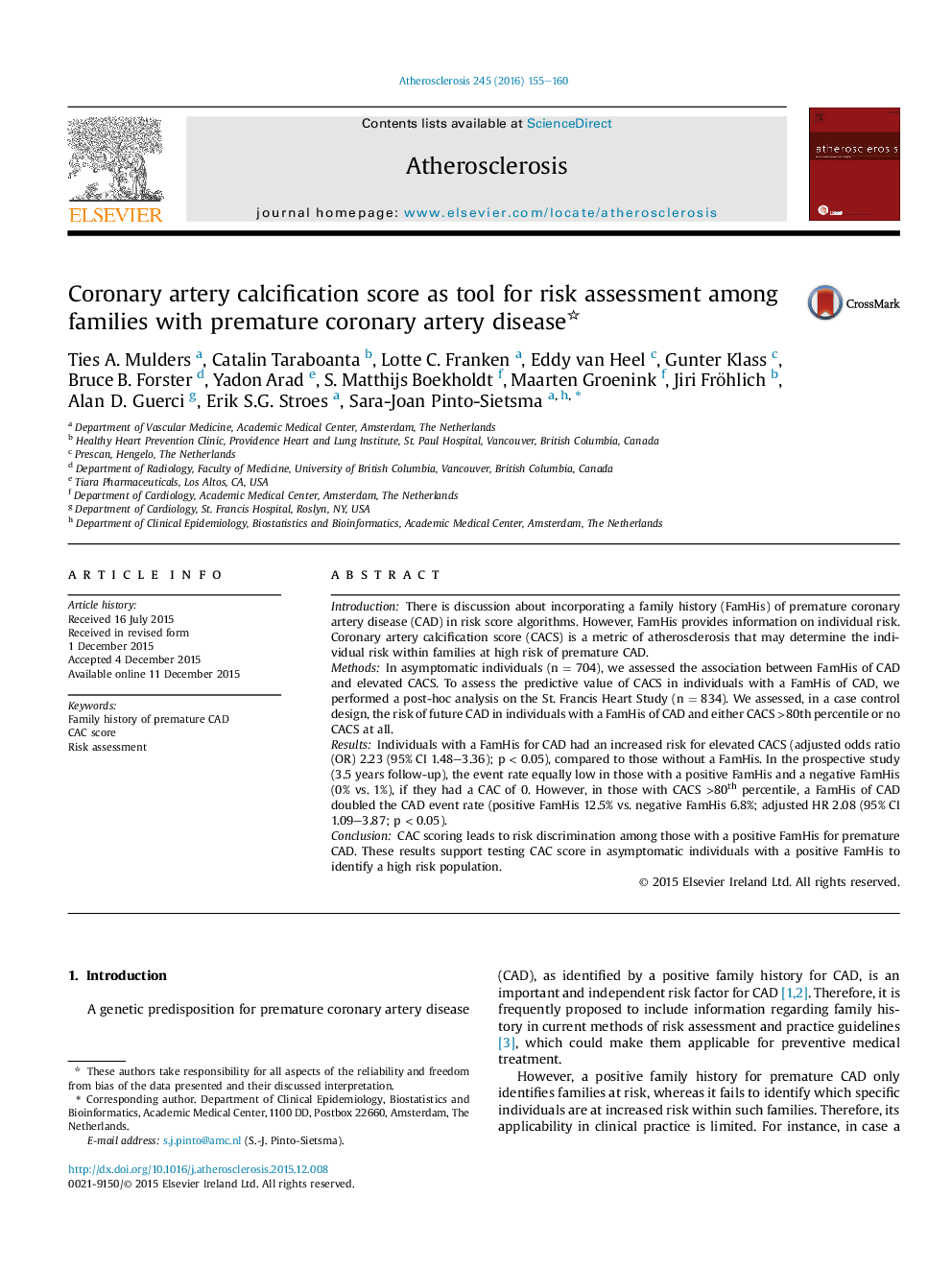| کد مقاله | کد نشریه | سال انتشار | مقاله انگلیسی | نسخه تمام متن |
|---|---|---|---|---|
| 5943543 | 1574720 | 2016 | 6 صفحه PDF | دانلود رایگان |

Summary
- What is already known about this subject?
- A family history of premature coronary artery disease is a known risk factor for coronary artery disease itself.
- What does this study add?
- Not all individuals with a family history of premature coronary artery disease have the same increased risk. Our study shows that this is dependent on the coronary calcium score. Those without coronary calcium are not at increased risk, those with elevated coronary calcium are at increased risk.
- How might this impact on clinical practice?
- These findings imply that adding CAC to family history has capacity to identify individuals at increased risk for future cardiovascular disease in high risk families. Combined with recent guidelines and previous evidence on treatment of elevated CAC in individuals with a positive family history for premature CAD, we propose that risk assessment via CAC scoring in high risk families should be incorporated into daily practice, a move towards more personalized care in cardiovascular medicine.
IntroductionThere is discussion about incorporating a family history (FamHis) of premature coronary artery disease (CAD) in risk score algorithms. However, FamHis provides information on individual risk. Coronary artery calcification score (CACS) is a metric of atherosclerosis that may determine the individual risk within families at high risk of premature CAD.MethodsIn asymptomatic individuals (n = 704), we assessed the association between FamHis of CAD and elevated CACS. To assess the predictive value of CACS in individuals with a FamHis of CAD, we performed a post-hoc analysis on the St. Francis Heart Study (n = 834). We assessed, in a case control design, the risk of future CAD in individuals with a FamHis of CAD and either CACS >80th percentile or no CACS at all.ResultsIndividuals with a FamHis for CAD had an increased risk for elevated CACS (adjusted odds ratio (OR) 2.23 (95% CI 1.48-3.36); p < 0.05), compared to those without a FamHis. In the prospective study (3.5 years follow-up), the event rate equally low in those with a positive FamHis and a negative FamHis (0% vs. 1%), if they had a CAC of 0. However, in those with CACS >80th percentile, a FamHis of CAD doubled the CAD event rate (positive FamHis 12.5% vs. negative FamHis 6.8%; adjusted HR 2.08 (95% CI 1.09-3.87; p < 0.05).ConclusionCAC scoring leads to risk discrimination among those with a positive FamHis for premature CAD. These results support testing CAC score in asymptomatic individuals with a positive FamHis to identify a high risk population.
Journal: Atherosclerosis - Volume 245, February 2016, Pages 155-160